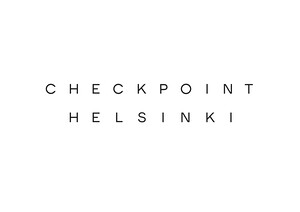June 11–August 31, 2016
Seurasaari
FI-00250 Helsinki
Finland
Artists: Ahmed Al-Nawas and Minna Henriksson, Kader Attia, Annika Eriksson, Natascha Sadr Haghighian with Haig Aivazian and Jumana Manna, Ilya Orlov, Liisa Roberts. Special guest: Clémentine Deliss. Poster by: Erik Bruun
Public programme with: Yael Bartana, Terike Haapoja, Saara Karhunen, Eva Neklyaeva, Nora Sternfeld, Jenna Sutela, Mikko Teräsvirta and many others
Curated by: Joanna Warsza
During Bertolt Brecht’s years in exile in the Nordic countries, when he wrote endlessly about political struggles, he suddenly turned to picturing the landscapes of Scandinavia. His sonnet Finnische Landschaft (1940), written in Finland’s Kymi Province, contemplates the clean waters, farmhouses and activities of this people that he described as being “silent in two languages.” But even the most pastoral landscape is always also social and political. As Brecht explained: “silence” referred also to mechanisms of idealisation, conciliatory rhetoric and fear of action at various stages of Finnish history.
The summer-long exhibition Finnish Landscape responds to the array of cultural and political landscapes embedded in the heterotopic scenery of Seurasaari Open-Air Museum, founded on an island near Helsinki in 1909. The museum grew out of ethnographic nationalism and political romanticism, its rural houses relocated from various regions combining to form a “little Finland.” The idea was to idealize the countryside, to create a new regionalism, and to tell a different story that opposed both Russification and Swedish dominance. Then, after World War II, rapid modernization meant that Finland lost interest in self-identifying with its agrarian past, and modernity suppressed links with its rural foundations.
In summer 2016, a number of artists will intervene in the museum site, in its displays, houses and collections. The various projects will deal with the concepts of conservation and destruction, nature and culture, ethnography and post-ethnography, historical use and misuse, and finally with the subtle difference between building an identity and branding an identity in the current Finnish cultural and political landscape.
Commissioned by Checkpoint Helsinki, co-produced with the National Museum of Finland and Seurasaari Open-Air Museum
Checkpoint Helsinki was founded in 2013 as a constructive and sustainable alternative for commerce-driven city branding art initiatives. We commission and produce the contemporary art of the future, inviting international artists and curators to work in Finland. We work in collaboration with local organizations without one fixed venue. We are driven by art and artists’ fascinating power to establish a critical space within society. Our program consists of new commissions, developed by international and local curators and artists, specifically for Helsinki. Alongside this, we actively engage in public debate, campaigns and projects with the aim to support the lively and diverse art scene. We are currently preparing the publication Next Helsinki-Public Alternatives for Guggenheim’s Culture Driven Development will be launched in the fall. The publication presents submissions of Next Helsinki competition that was launched in 2015 as a collaboration between Gulf Labor Coalition, Terreform and Checkpoint Helsinki.



